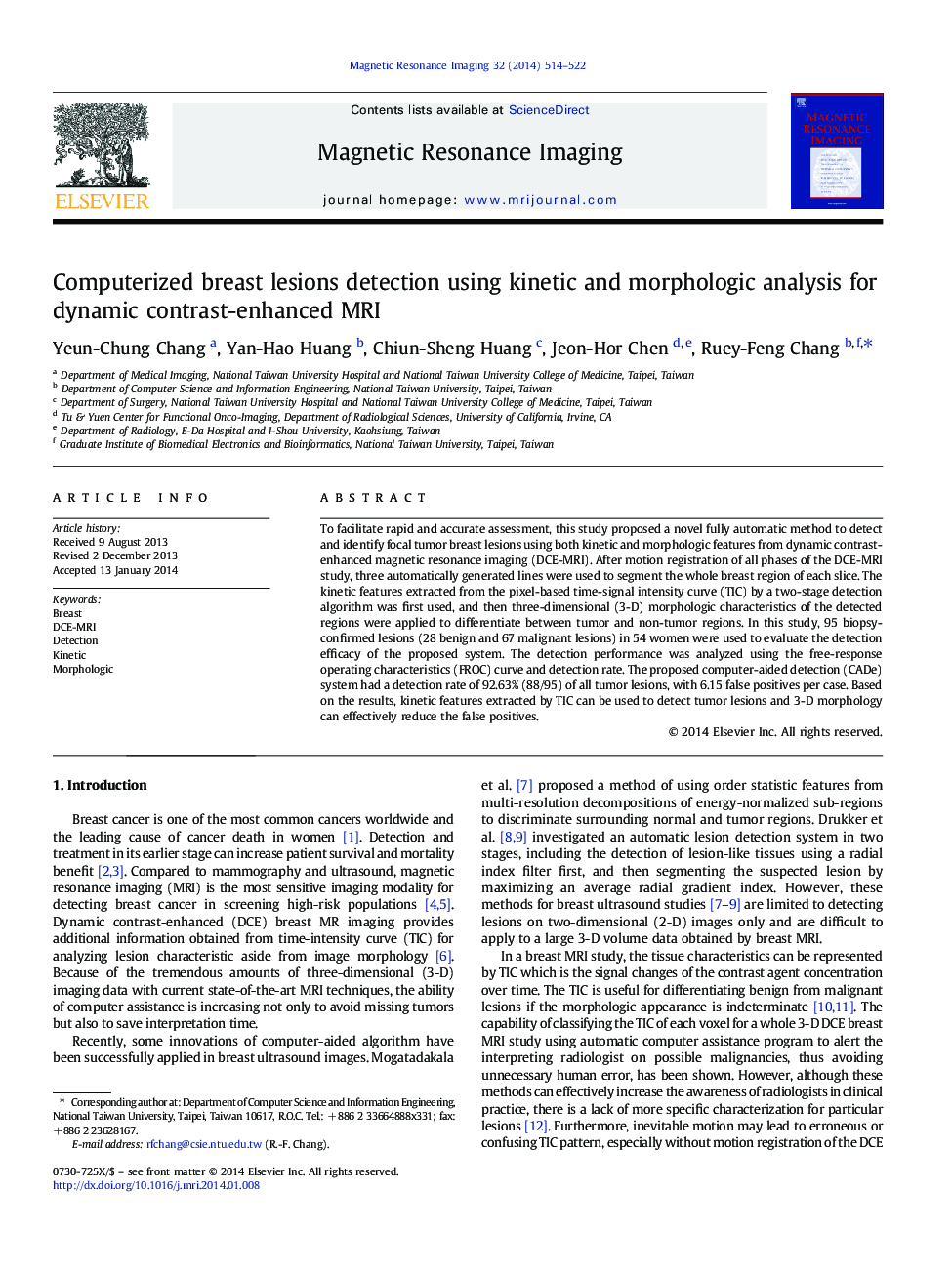| Article ID | Journal | Published Year | Pages | File Type |
|---|---|---|---|---|
| 10712599 | Magnetic Resonance Imaging | 2014 | 9 Pages |
Abstract
To facilitate rapid and accurate assessment, this study proposed a novel fully automatic method to detect and identify focal tumor breast lesions using both kinetic and morphologic features from dynamic contrast-enhanced magnetic resonance imaging (DCE-MRI). After motion registration of all phases of the DCE-MRI study, three automatically generated lines were used to segment the whole breast region of each slice. The kinetic features extracted from the pixel-based time-signal intensity curve (TIC) by a two-stage detection algorithm was first used, and then three-dimensional (3-D) morphologic characteristics of the detected regions were applied to differentiate between tumor and non-tumor regions. In this study, 95 biopsy-confirmed lesions (28 benign and 67 malignant lesions) in 54 women were used to evaluate the detection efficacy of the proposed system. The detection performance was analyzed using the free-response operating characteristics (FROC) curve and detection rate. The proposed computer-aided detection (CADe) system had a detection rate of 92.63% (88/95) of all tumor lesions, with 6.15 false positives per case. Based on the results, kinetic features extracted by TIC can be used to detect tumor lesions and 3-D morphology can effectively reduce the false positives.
Related Topics
Physical Sciences and Engineering
Physics and Astronomy
Condensed Matter Physics
Authors
Yeun-Chung Chang, Yan-Hao Huang, Chiun-Sheng Huang, Jeon-Hor Chen, Ruey-Feng Chang,
